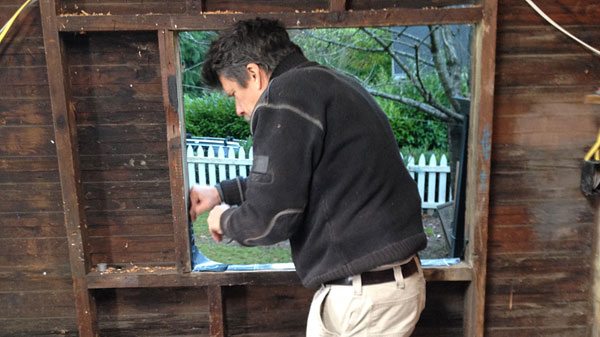
Many home shoppers buy homes anticipating they’ll make some property upgrades throughout their years of ownership. People who buy fixer-uppers typically have larger plans than those who want to replace the laminate flooring with hardwoods or refinish their roofs. Regardless of the remodel’s scale, understanding basic construction terminology helps homeowners communicate effectively with their contractors, and helps do-it-yourselfers (DIY) complete remodels to code.
Here are 10 terms often used during the remodel process.
1. Flashing: Contractors use flashing to prevent water damage in jointed areas where water can seep into the home, such as the roof meeting the chimney. Flashing is a weather-stripping material, usually sheet metal.
2. Easement: An easement is a contract to use someone else’s property for a specific and limited purpose. For example, some easements exist for sewer lines to pass through a neighbor’s yard or for concrete roadways to be used as access to homes beyond the public street.
3. Egress: The word means to leave a place. All homes must comply with proper egress regulations, which require escape routes from each level of the home.
4. Joists: Building joist are long pieces of construction material (typically wood) that run parallel to each other in a series to create supportive structures for floors, ceilings and roofs. Floor joists act as framing for flooring material. Joists are spaced 12 to 24 inches apart, spanning the length of the floor and resting on perpendicular beams to support the floor’s weight. The beams transfer the weight from the joists to the home’s load-bearing walls, which transfer weight to the foundation of the home.
5. Load-Bearing Walls: These walls are named appropriately as they’re structured to support the home’s weight. Homeowners can determine which walls in their homes bare weight by reviewing the original building plans. Exterior walls are almost always load-bearing walls, and walls in the center of homes are usually designed to support weight. DIYers can tear down curtain walls, or non-load-bearing walls that separate rooms, but load-bearing walls should be remodeled by professional contractors to maintain the structural integrity of the home.
6. Molding: Many rooms contain decorative wood boarders known as molding. Crown molding joins the ceiling and wall, and base molding connects the floor and wall. Molding provides charming, design-forward joint coverage to outline a room, highlight room height or create a finished look. Explore homes on Zillow for examples of decorative molding and other remodel inspiration.
7. Setback: This is the distance between the road and the property, regulated by government-set building codes. Zoning specifications limit the proximity of homes to nearby rivers, shorelines and flood plains as well as the street, highway or road. Homeowners who plan to add to the front of their homes may be limited by the setback. Such regulations also apply in some areas to fences and landscaping.
8. Stair Rise: When building stairs, the stair rise is the vertical distance between the steps (also known as treads) of the stairs. The stair rise dictates how steep the stairwell is and structurally should not exceed 7.5 inches.
9. Sub: A sub is an abbreviation for a subcontractor or specialty tradesman. The general contractor acts as the managing contractor who writes the contract with the homeowner and hires specialized subcontractors to complete portions of the overall remodel.
10. Tongue and Groove (T&G): Tongue and groove is a style of wood joint where edges fit together to form a level surface. Like a puzzle, one wood edge has a ridge cut out of the center and the adjoining piece of wood has a narrow extension on its edge to fit perfectly in the ridge. Side by side, these edges interlock in a strong joint often used for flooring.
These 10 construction terms should help the average homeowner when talking about a remodel with a home store salesman, a contractor or a buddy recruited to help with a weekend project.
By Tali Wee


No Comments